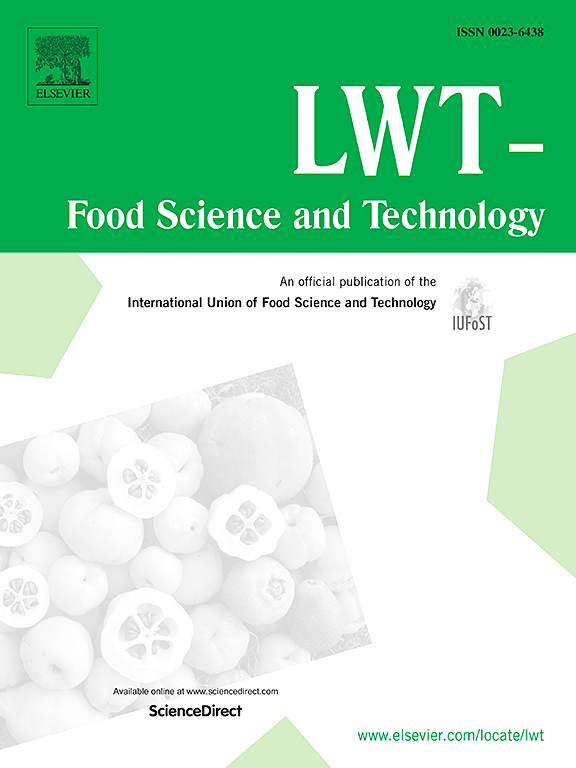冷等离子激活溶液对冷藏贮藏罗非鱼片微生物数量和多样性的影响
IF 6.6
1区 农林科学
Q1 FOOD SCIENCE & TECHNOLOGY
引用次数: 0
摘要
在这项研究中,罗非鱼片经等离子体活化溶液处理后冷藏于 4 ± 1 °C。与蒸馏水组相比,等离子体活化乳酸(PALA)处理可将鱼片的微生物货架期延长 4 d。PALA 组的细菌总数、嗜心菌、假单胞菌属、产 H2S 菌和乳酸菌数均低于其他处理组(P <0.05)。高通量测序表明,变形菌和固缩菌是贮藏期间最主要的两个核心微生物门类。在贮藏的前 5 天,醋酸杆菌、库氏菌和雪旺菌是优势菌属。在储存的第 7 天,腐败菌气单胞菌和假单胞菌略有增加。这些机理结果表明,冷等离子体溶液处理可使罗非鱼片在冷藏条件下储存长达 7 天。本文章由计算机程序翻译,如有差异,请以英文原文为准。
Effects of cold plasma-activated solution on microbial amounts and diversity of Tilapia fillets at refrigerator storage
In this study, tilapia fillets were treated with the plasma-activated solution and refrigerated at 4 ± 1 °C. Compared with the distilled water group, plasma-activated lactic acid (PALA) treatment prolonged the microbiological shelf life of fish fillets by 4 d. The total bacterial count, psychrophilic bacteria, Pseudomonas spp., H2S-producing bacteria, and lactic acid bacteria in the PALA group were lower than those in the other treatment groups (P < 0.05). High-throughput sequencing indicated that Proteobacteria and Firmicutes were the two predominant core microbial phyla present during storage. In the first 5 d of storage, Acinetobacter, Kurthia, and Shewanella were the dominant genera. At the 7th d of storage, the spoilage bacteria Aeromonas and Pseudomonas increased slightly. These mechanistic results demonstrate that cold plasma solution treatment allows tilapia fillets to be stored under refrigeration for up to 7 d. Cold plasma solutions have potential applications in fish fillet refrigeration.
求助全文
通过发布文献求助,成功后即可免费获取论文全文。
去求助
来源期刊

LWT - Food Science and Technology
工程技术-食品科技
CiteScore
11.80
自引率
6.70%
发文量
1724
审稿时长
65 days
期刊介绍:
LWT - Food Science and Technology is an international journal that publishes innovative papers in the fields of food chemistry, biochemistry, microbiology, technology and nutrition. The work described should be innovative either in the approach or in the methods used. The significance of the results either for the science community or for the food industry must also be specified. Contributions written in English are welcomed in the form of review articles, short reviews, research papers, and research notes. Papers featuring animal trials and cell cultures are outside the scope of the journal and will not be considered for publication.
 求助内容:
求助内容: 应助结果提醒方式:
应助结果提醒方式:


